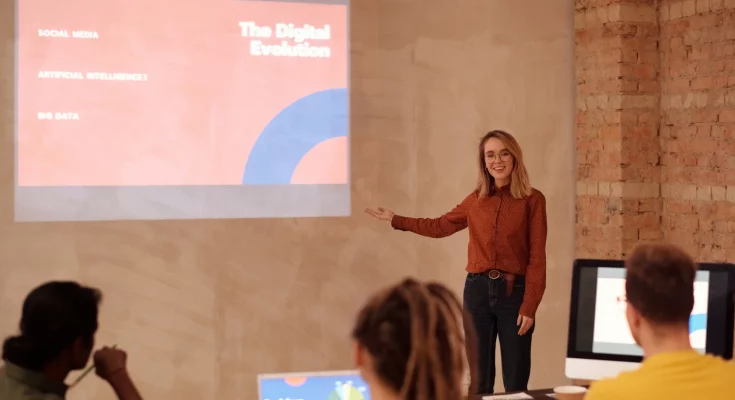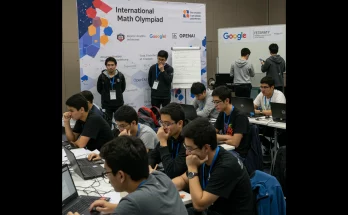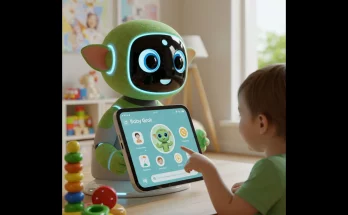With the rapid advancement of technology, we find ourselves at a crucial juncture in education. Many schools around the world echo the sentiment: “Your browser appears to be unsupported. Please install a current version of Chrome, Firefox, Edge, or Safari for a better experience.” This notification is more than just a technical glitch; it symbolizes the barriers students and educators face in adapting to new tools, particularly those powered by artificial intelligence (AI). In this article, we will explore how AI can truly transform education and bridge learning gaps, making quality education accessible to all.
The Historical Context of AI in Education
Reflecting back to the late ’90s, I recall my first foray into utilizing AI in the classroom as a maths teacher in London. During a lesson, my students were immersed in an adaptive maths program that tailored content to their individual needs. It was a moment that inspired awe and also provoked self-doubt: If technology could teach them, where did my role fit in? However, through data analysis from the program, I was able to divide the class according to competencies, altering my teaching strategies based on student engagement and performance. Over time, our results soared, with our maths program ranking in the top 2% for value-add in England.
Present-Day AI: Bridging Learning Gaps
Fast forward to today, and the potential of generative AI technology in education is astounding. The stark reality remains that 7 out of 10 children born in low- and middle-income countries cannot read by age 10. The inequities in educational resources and outcomes call for innovative solutions, and AI can play a significant role if approached thoughtfully.
Challenges in Education and AI Solutions
Despite the promise of AI, various challenges persist in the education sector. Here are three pressing issues, coupled with potential AI-driven solutions:
Problem 1: Lack of Access to Quality Learning Resources
Many students struggle to access materials tailored to their interests and learning levels. This gap often leads to disengagement and even dropout. Personalized adaptive learning solutions can make a difference:
- Adaptive Learning Platforms: These solutions adjust the difficulty and content of lessons based on real-time assessments of a student’s performance. Examples include Mindspark in India and onebillion in Malawi.
- AI Tutors: Tools like Rori in Ghana and Khanmigo in the USA offer one-on-one instruction that boosts engagement and confidence.
For AI tools to succeed, thorough assessments of students’ initial levels and ongoing feedback are essential—especially regarding content relevancy and bias considerations.
Problem 2: Undertrained Educators
Many teachers lack the necessary training and resources, particularly in regions like sub-Saharan Africa, where up to 40% of teachers cannot demonstrate subject proficiency. This issue can be tackled with:
- AI-Enabled Teacher Coaches: Simulated environments can help educators practice their skills and receive feedback using tools like TeachFX and Loquat Learning.
- Lesson Planning Support: Tools such as Teacher.AI in Sierra Leone and Oak National Academy in the UK assist in creating custom resources aligned with curriculum standards.
- AI Assistants: Administrative tasks like grading and attendance can be automated using AI, reducing workloads and enhancing feedback quality.
Teachers are more likely to adopt AI tools if they solve specific problems and improve their efficiency while maintaining user-friendliness.
Problem 3: Costly Content Development
Producing educational resources in local languages can be prohibitively expensive and time-consuming. Here are AI approaches to mitigate this challenge:
- AI Translators: Natural language processing can make educational content accessible in local languages, promoting inclusion in places like South Africa and India.
- AI Assessors: Platforms can create and grade assessments across various formats, improving the reliability and efficiency of evaluations.
- AI Evaluators: Machine learning can analyze educational data, generating insights to refine teaching strategies and enhance student success rates.
Guiding Principles for Implementing AI in Education
The integration of AI in education holds immense potential but requires careful consideration of several guiding principles:
- Equity: AI systems must prioritize fairness and not exacerbate existing inequalities.
- Data Privacy: Safeguarding student data must be integral to AI implementations.
- Ethics: All AI solutions should adhere to principles of fairness and justice.
- Evidence and Accuracy: AI technologies must undergo rigorous evaluation to ensure their reliability in diverse contexts.
- Impact: Consistent monitoring must assess the effectiveness of AI solutions on learning outcomes.
Engaging with AI in education is no longer optional; it is essential. The uneven distribution of technology risks deepening educational inequities if left unchecked. Schools and educators must actively embrace these innovations to redefine teaching and learning.
The Future is Collaborative
The blending of AI with traditional educational practices presents an opportunity to shift the perspective: “How can I utilize this technology to serve my students and myself effectively?” By focusing on the integration of technology into teaching, we can improve the overall educational experience.
Organizations like the Bill & Melinda Gates Foundation are paving the way, directly funding impactful initiatives like Eidu and EGRA AI. By advancing AI solutions in education while maintaining ethical and quality benchmarks, a more equitable learning landscape is possible.
In summary, AI has the potential to transform education globally by addressing prevalent challenges and ensuring that all students—regardless of background—have access to quality learning experiences. The collaboration between technology and education professionals will be key to making this vision a reality.



